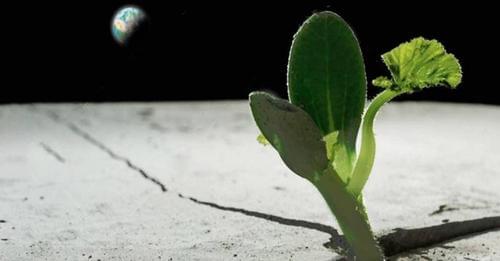In January 2019, China made history by becoming the first country to land a spacecraft on the far side of the moon. As part of this mission, the Chang’e-4 lunar rover carried a small biosphere with six living organisms, including cotton seeds. While the other plants in the biosphere died quickly, the cotton seeds produced a small plant, which grew two leaves before it died. Researchers then created a 3D simulation of the cotton plant using data from the experiment, which revealed that the cotton plant grew much better than expected before it died from the cold.
This experiment marked the first time that humans have attempted to grow plants on the moon. Growing plants in space is an important part of NASA’s vision of long-term space travel. If astronauts are to embark on missions lasting months or years, they will need fresh produce to supplement their diet. While vitamins and other supplements are effective for short-term missions, the nutrients in supplements and ready-made meals can break down over time. Radiation in space can speed up this process. In addition, fresh vegetables would give astronauts more nutrients and improve the taste of their food. Furthermore, growing plants in space would enable astronauts to have access to fresh, uncooked food, reducing their reliance on pre-cooked meals.
However, growing plants in space is not just about ensuring astronauts have access to fresh food. NASA is also interested in how growing plants can impact the psychological well-being of astronauts. Studies have shown that access to plants and green spaces can have a positive impact on mental health, and astronauts on the International Space Station have reported that fresh flowers and gardens can create a beautiful atmosphere and make them feel more connected to Earth.
